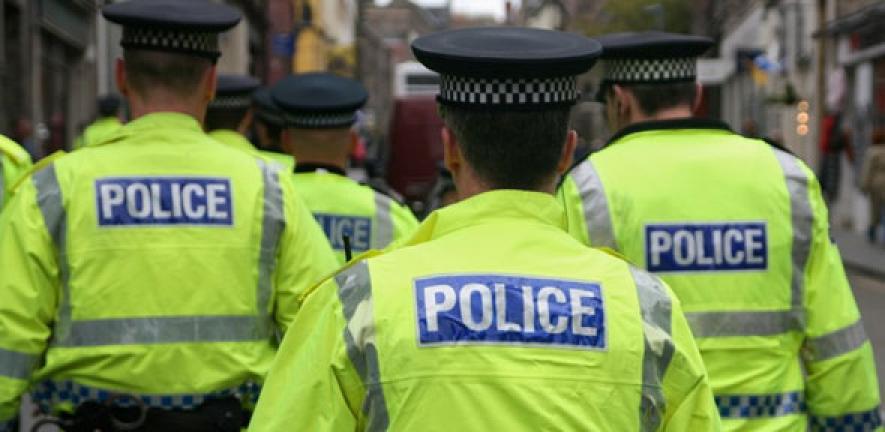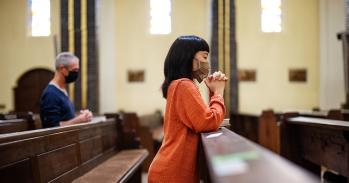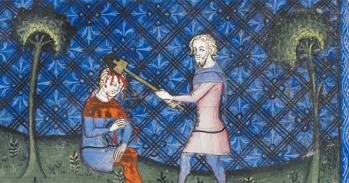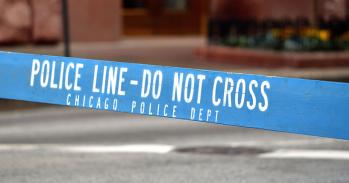
Muslim communities may not be as victimised by violent crime, or as dissatisfied with the police as is widely suggested and believed, according to new research by a Cambridge academic.
Muslim communities may not be as victimised by violent crime, or as dissatisfied with the police as is widely suggested and believed, according to new research by a Cambridge academic.
The findings suggest a growing need to move beyond misleading and potentially damaging generalisations which seek to cast British Muslim communities only as the victims of violent crime and police discrimination.
Julian Hargreaves
An examination of statistics taken from the Crime Survey of England and Wales between 2006 and 2010 reveals a surprising counter-narrative to commonly-held perceptions of British Muslim communities and their relationships to crime victimisation and the criminal justice system.
Analysis of crime data generated by nearly 5,000 Muslims reveals few differences between Muslims and non-Muslims in relation to a range of violent personal crime including assaults, wounding and threats – the types of crime that scholarly literature, media reports and anecdotal evidence all suggest have disproportionately affected Muslim communities.
Likewise, statistical analysis reveals few statistically significant differences between Muslim, Hindu, Jewish and Sikh respondents in respect of many personal crime types included within the Crime Survey. Research carried out by Julian Hargreaves from Cambridge’s Centre of Islamic Studies, and published today by the British Journal of Criminology, also shows surprisingly high levels of positive attitudes towards the police. Among Muslims surveyed by the Crime Survey of England and Wales, 61.2% of respondents rated their local police as either good or excellent compared to 53% of non-Muslims.
Despite widespread condemnation of police counter-terrorism measures such as stop and search, data from the Crime Survey reveal that a sizeable majority of Muslim respondents not only reported positive attitudes towards a range of subjects such as police fairness, reliability and relevance to the community but are in many cases more likely to do so than non-Muslim respondents.
“Such findings, derived from a large nationally-representative dataset, clearly challenge the dominant narrative within the criminological literature which describes all or most Muslim people as being at greater risk of violent crime, as well as having a deep-rooted sense of police dissatisfaction,” said Hargreaves.
“Much of the discourse in this area is highly politicised and rhetorical in character, rarely rooted in statistical evidence and seldom substantiated by empirical findings. The findings suggest a growing need to move beyond misleading and potentially damaging generalisations which seek to cast British Muslim communities only as the victims of violent crime and police discrimination.”
Research undertaken by Hargreaves also examined the relationship between socio-economic disadvantage and household crime such as burglary and car theft. Here, the analysis revealed a strong relationship between household crime victimisation and the socio-economic disadvantage suffered by many British Muslim communities – topics rarely, if ever, discussed by criminologists and journalists.
The research incorporated data from a ‘Multiple Deprivation Index’, a ten-tier classification system designed to map socio-economic deprivation in the UK. While there were no discernible differences between Muslim and Christian households in each tier (or decile) there were marked differences in the numbers of Muslim and Christian households contained within areas of disadvantage. Two thirds of Muslim households (66.2%) were distributed among deciles containing the most deprivation and the highest levels of reported household crime.
While Hargreaves’ work provides a fascinating counter-balance to traditional victimization narratives concerning Muslim communities, he is at pains to point out the need to use large-scale and anecdotal evidence together in order to complete as broad a view as possible of Muslim life in 21st-century Britain.
“Research in this field is dominated by descriptions of British Muslim communities which appear to eschew the use of large, nationally-representative data samples, placing emphasis instead on interviews and focus groups and on describing the nature of anti-Muslim hostility rather than quantifying the scope and extent of any problems.
“Descriptions of the lived experiences of Muslim victims of crime have undoubtedly provided an invaluable contribution but it is clear that the Crime Survey offers crime statistics at odds with commonly-propagated views – and a greater range of attitudes towards the police than might be assumed from an uncritical reading of the literature.
“Current debates around British Muslim communities, crime and the police – and especially those around the scale of current problems – unfortunately rest on rather inconclusive statistical evidence. Much more research is needed to complete the criminological picture in this area, including large-scale data concerning damage to property such mosques and small businesses. The is also a need for research to focus more often on ‘everyday’ hate crime, such as verbal abuse from strangers, which often goes unreported to both the police and the Crime Survey.”
The text in this work is licensed under a Creative Commons Licence. If you use this content on your site please link back to this page. For image rights, please see the credits associated with each individual image.





